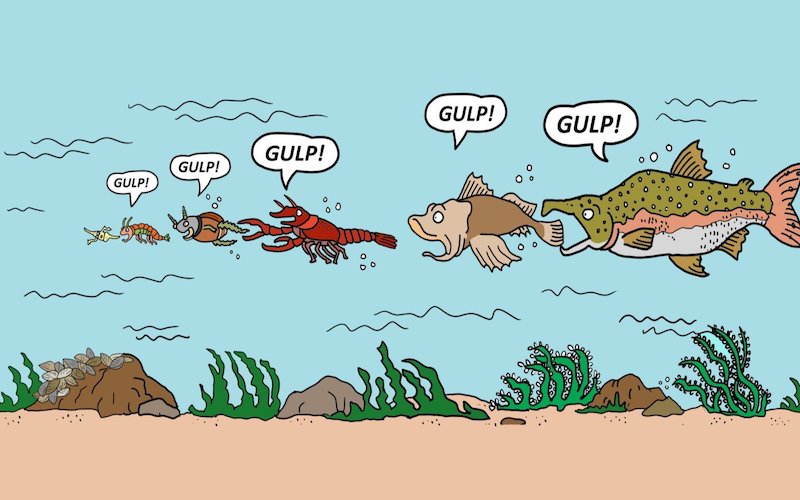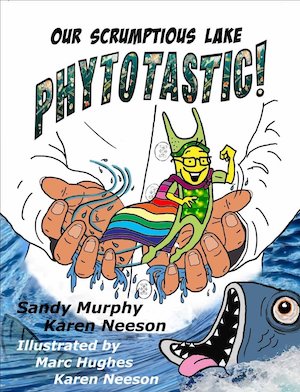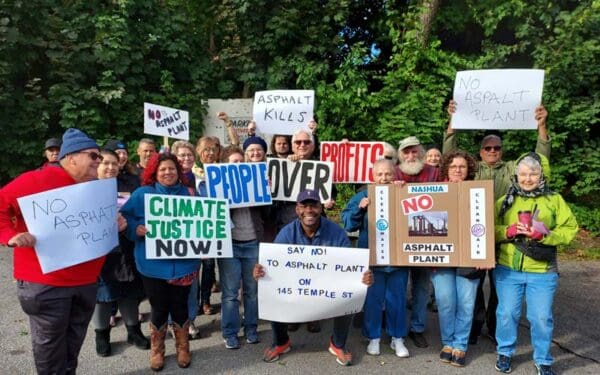
"Our Scrumptious Lake Phytotastic" is a graphic novel diving into storm water runoff and toxic blue-green algae on Lake Champlain. Illustrations by Marc Hughes and Karen Neeson.
Every summer, sometimes for weeks on end, toxic blue-green algae break out on Vermont’s Lake Champlain. Residents can’t swim or fish because of the dangers, which can include skin irritation, liver damage, and even neurological disease. Ducks, fish, livestock, and pet dogs are also at risk when they encounter the tainted water – not just for illness but even death.
The outbreaks, now a problem on lakes and ponds across New England, are caused by nitrogen and phosphorus. In the case of Lake Champlain, the algae proliferate thanks to stormwater runoff, which washes nitrogen and phosphorus into the lake from roads, subdivisions, and nearby farms each time it rains. When the lake water heats up each summer, conditions for the overgrowth of blue-green algae (also known as cyanobacteria) are ideal.
Seeing the seasonal outbreaks devastate life along Lake Champlain, lifelong Vermonter Sandy Murphy and Karen Neesom started looking for answers. The educators have collaborated on the colorful illustrated novel “Our Scrumptious Lake Phytotastic,” written primarily for upper elementary and middle schoolers. The graphic novel is a deep dive into toxic blue-green algae, the role of stormwater runoff in creating it, and the importance of protecting aquatic ecosystems. In the novel, the character Phytoplankton is a microscopic organism oblivious to his role in the lake’s food chain. Vermaid, a lake scientist of Abenaki heritage, befriends him. The plot thickens when a torrential rainstorm causes stormwater runoff that jeopardize the lake’s health.
CLF spoke recently with Murphy about the project. The following conversation has been edited for length and clarity.
What motivated you and Karen to write this book?
It was really a conglomerate of experiences. In 2017, Karen and I conducted a summer camp for 8- to 12-year-olds at my home in Underhill. I happened to have Crane Brook running through my property, so we used the brook as a wonderful resource for the campers. I was quite taken by some of the questions they were asking about water and how curious they were. We said to ourselves, “Wow, there’s things we don’t know, and we want to know this, too!”
It really propelled us into seeking out answers. In the book, we say curiosity is our superpower. And it truly is.
Why a graphic novel as opposed to a traditional book?
As reading teachers with many years in the educational system, we are very familiar with what types of books students gravitate to – and that is graphic novels. This is a paradigm shift in the traditional approach to science and literacy education, but one we both agreed is crucial to addressing such a critical message. Our aim was to target all types of learners, not just those who may already be inclined to read books. Our brains crave stories to help us to receive and remember information. So why not?
What are the important takeaways for kids thinking about climate change?
We really wanted readers to understand that what occurs on land impacts our water.
With warming temperatures and increasing rainstorms, we’re extremely vulnerable to rainwater runoff that drags these nutrients and pollutants into our water system, which then affects the aquatic food chain. These warming temps are particularly impacting phytoplankton, which is the foundation of our aquatic food chain. So, the character Phytoplankton, a microscopic organism, is ridden with anxiety and clueless to his purpose in life. But he learns that size is irrelevant to how important he is. Although we can’t see Phytoplankton with our naked eye, he is the most important organism in the world.
Without phytoplankton, our oxygen depletion would be pretty serious. Then where would we be?
You were one of 10 children growing up on a dairy farm along the shores of Lake Champlain. How have you seen the lake’s health change since your childhood?
When I was younger, I had the privilege to access Lake Champlain, constantly swimming in it, and it was just such a wonderful resource. And then, probably about 20 years ago, I noticed, wow, things are really changing. I watched the water change, the looks of it. At the time, I really didn’t know exactly what was going on, but I watched the water decline in its quality. And that eventually did lead me to questions. The more answers I got, the more I recognized, okay, I don’t know, but I want to know. You could say that was, again, a factor in writing the book.
My views about Lake Champlain’s problems definitely have changed. As I became more aware of the sources that led to water problems, I became much more sensitive and empathetic to, particularly, farmers. I grew up on a farm, and farmers are known to have practices that have inadvertently contributed to these adverse effects on water. I’m keenly aware that farmers need resources for support – and not only resources but moral support. In the last few years, there’s been rising awareness about what we can do to mitigate what’s been going on. And I’m so pleased with that, but we do need to be sensitive to farmers and how they have at times become a victim when their intentions have been so well-deserving.
You took pains to include the Indigenous character “Vermaid” in your book. What were you hoping to achieve by making that choice? Did you get input from the Abenaki?
We knew right from the get-go we can’t write a book about Lake Champlain and dismiss recognizing that the Abenakis were the caretakers of this land and water for a much longer time than we were. And so, out of respect and the honoring of their homeland, we sought out Melody Walker Brook [an educator, artist, and member of the Elnu Abenaki Tribe]. She was instrumental in much of our knowledge and understanding of the Abenaki culture and heritage. It was important for us to have members of the Abenaki community say, “Okay.”
If there’s one message you want to convey to readers, what is it?
The interdependence of our aquatic ecosystem is fragile and irreplaceable. Furthermore, climate change is adversely impacting the health of our lakes. With this said, there are actions that we can take.

“Our Scrumptious Lake Phytotastic” is available in bookstores, at www.phytotasticlakes.com, and on Amazon.com. For further learning resources, refer to the book’s comprehensive appendix, which extends beyond Next Generation Science Standards and literacy common core standards.




